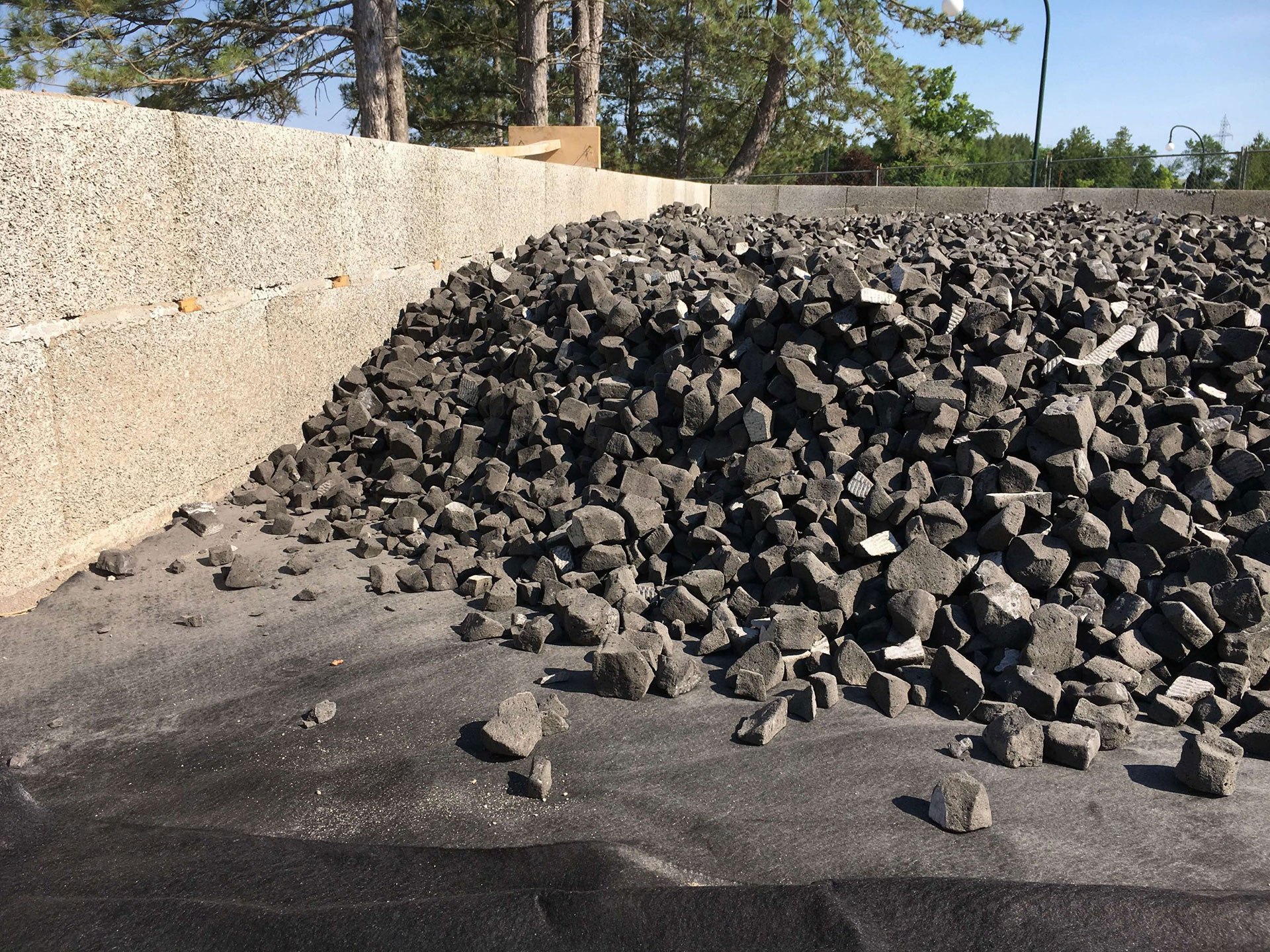In order for the Trent Forensics Facility to meet its Zero Carbon goals, choosing low-carbon foundation materials was important. Foundations are typically the most carbon-intensive portion of a building because the typical materials are all high emitters. Concrete and foam insulation are typically the two biggest contributors to a building’s carbon footprint and both are used in abundance in conventional foundations. Alternatives to these options are available, but not common.
We made three major decisions that radically altered the carbon footprint of the foundation for this building.
Glavel Foam Glass Gravel – This product uses recycled glass that is no longer suitable for containers to create “foam glass” chunks. This lightweight material provides thermal value of R 1.8 per inch and a high structural capacity that allows this one product to replace both sub slab insulation and sub slab aggregate. In one step, we provide the bearing surface for the slab and a layer of moisture-proof insulation. The Trent Forensics facility has a 380m2 footprint and requires R-25 of thermal performance under the slab. The carbon footprint of Glavel required to achieve this is 475 kgCO2e, while the carbon footprint of XPS foam would have been 40,097 kgCO2e, for a savings of 39,622 kgCO2e!
Nexcem Insulated Concrete Forms (ICF) – This product uses waste wood chips bound in cement to form an insulated concrete form. The version planned for the Trent Forensics facility is the R-28 product, which uses mineral wool inserts inside the form to add thermal performance. The Nexcem foundation with a high-slag concrete fill has a 7,574 kgCO2e carbon footprint for 142 m2 foundation wall area. A typical concrete foundation with XPS insulation would have had a carbon footprint of 45,843. An EPS foam ICF foundation would have come in at 9,175 kgCO2e.
High slag concrete – This product replaces up to 50% of the Portland cement in the concrete mix with blast furnace slag. The slag has similar binding properties as Portland cement, but as a by-product of the steel industry the emissions associated with producing the slag have been attributed to the steel, allowing this kind of mix to have a much lower carbon footprint. An average concrete mix for the Trent Forensics facility would have a carbon footprint of 14,232-18,603 kgCO2e. The high slag mix reduces this to 12,692 kgCO2e.
Options with even lower carbon footprint, such as earthbag foundation walls and earthen floors were ruled out as too radical for this project. An earthbag foundation would have had a carbon footprint of only 2,500 kgCO2e, and an earthen floor just 2380 kgCO2e.
We used the BEAM (Building Emissions Accounting for Materials) calculator from Builders for Climate Action to guide our decisions and show us the comparative carbon footprint of different material options.




